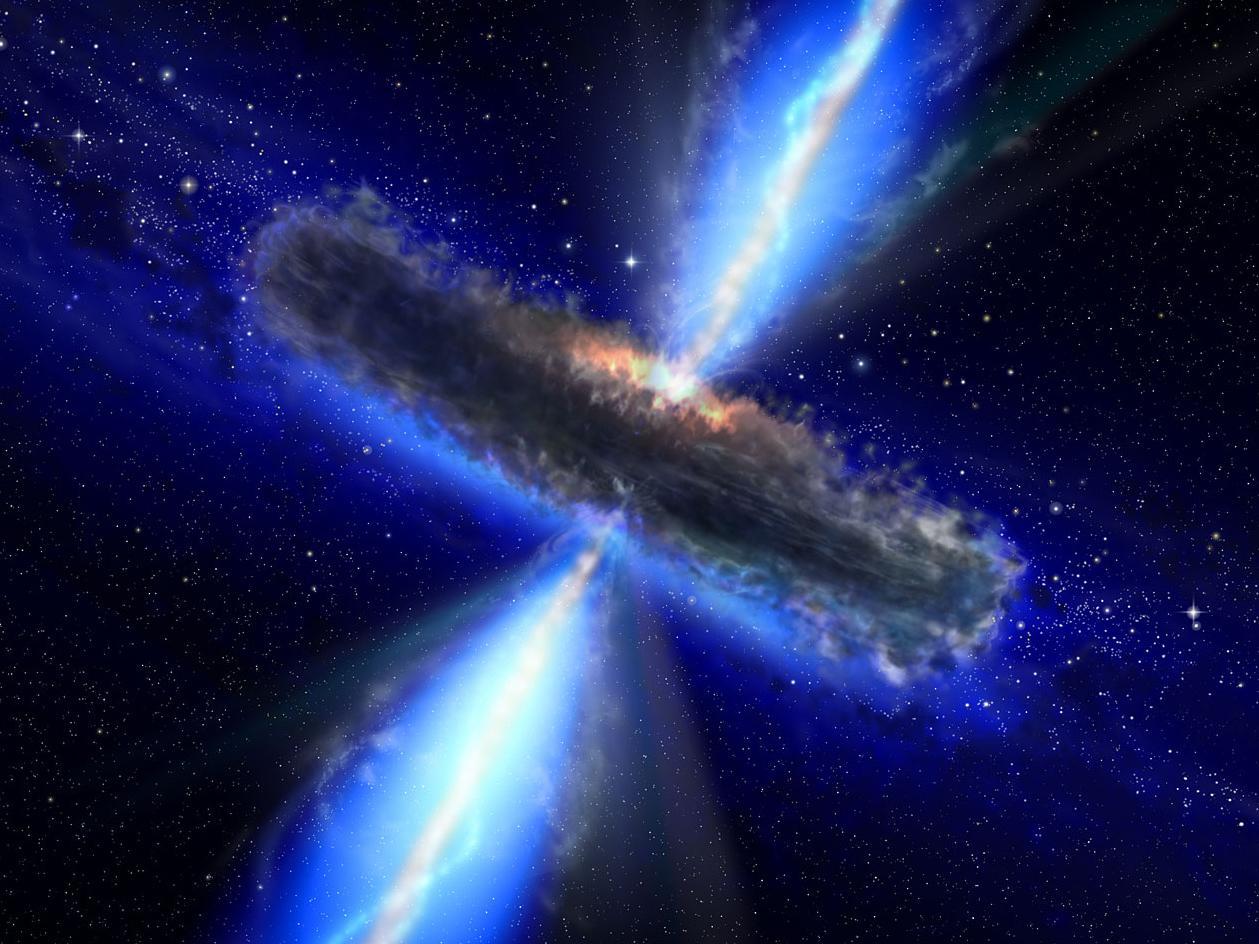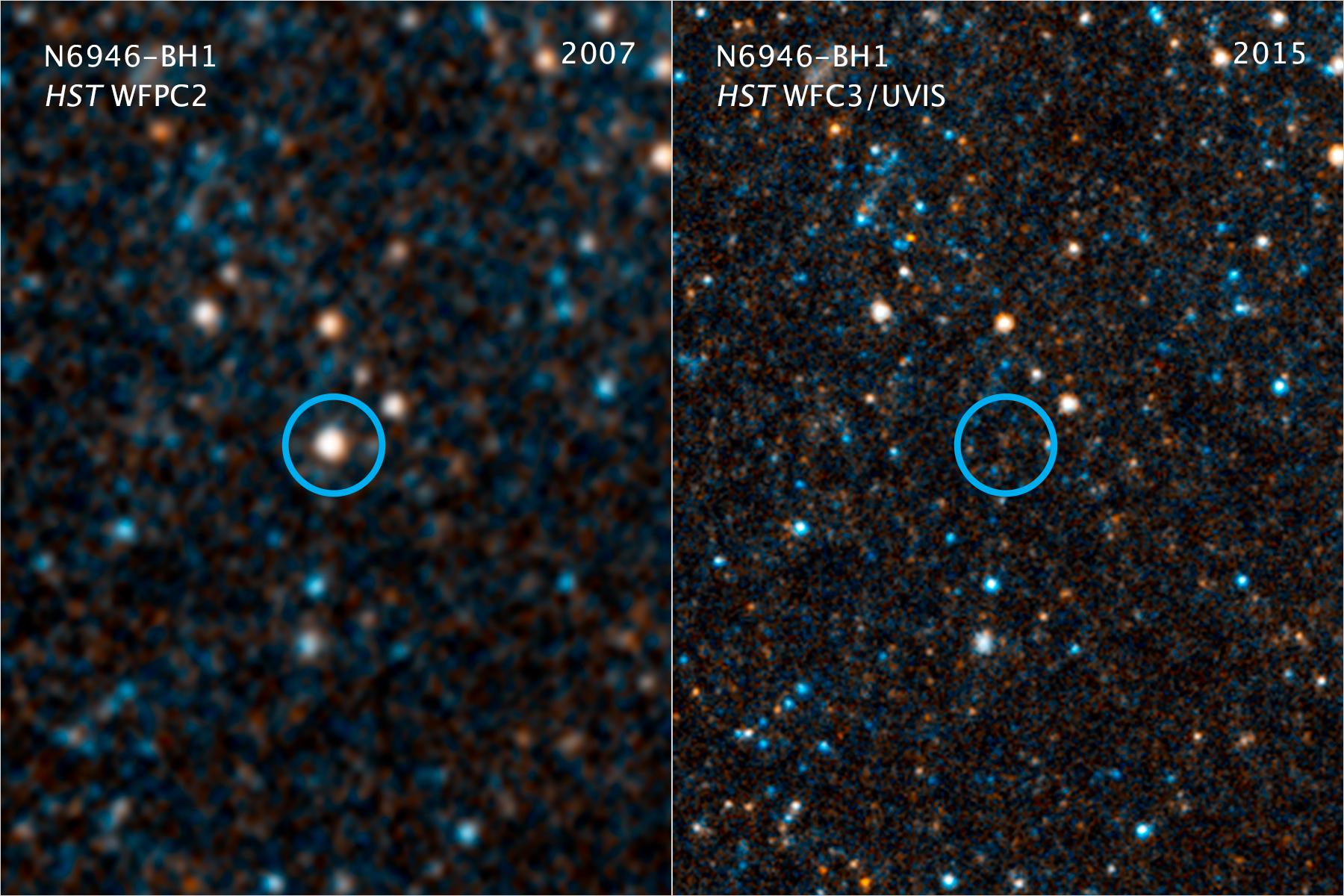The Largest Black Holes in the Universe Formed in a Snap — Then Stopped

About 13 billion years ago, when our universe was still just a scrappy startup, the cosmos hit a creative streak and churned out supermassive black holes left, right and center.
Astronomers can still sneak a peek at these relics of the early universe when they look at quasars, incredibly large, outstandingly bright objects thought to be powered by old black holes billions of times more massive than Earth's sun. However, the very existence of these ancient objects poses a problem. Many quasars appear to originate from the first 800 million years of the universe, long before any stars could grow big or old enough to collapse under their own mass, explode in a supernova and form a black hole.
So, where are these old holes in the fabric of space-time coming from? According to one popular theory, maybe all it takes is a whole lot of gas.
In a new study, published June 28 in The Astrophysical Journal Letters, researchers ran a computer model to show that certain supermassive black holes in the very early universe could have formed by simply accumulating a gargantuan amount of gas into one gravitationally bound cloud. The researchers found that, in a few hundred million years, a sufficiently large such cloud could collapse under its own mass and create a small black hole — no supernova required.
These theoretical objects are known as direct collapse black holes (DCBHs). According to black hole expert Shantanu Basu, lead author of the new study and an astrophysicist at Western University in London, Ontario, one of the defining features of DCBHs is that they must have formed very, very quickly within a very brief time period in the early universe.
"The black holes are formed over a duration of only about 150 million years and grow rapidly during this time," Basu told Live Science in an email. "The ones that form in the early part of the 150-million-year time window can increase their mass by a factor of 10 thousand."
How does a cloud of gas become a black hole? According to a 2017 study, such a transformation requires two galaxies with very different personalities: one of them a cosmic overachiever that's forming lots of baby stars and the other a low-key heap of starless gas.
Sign up for the Live Science daily newsletter now
Get the world’s most fascinating discoveries delivered straight to your inbox.
As new stars form in the busy galaxy, they blast out a constant stream of hot radiation that washes over the neighboring galaxy, preventing the gas there from coalescing into stars of its own. Within a few hundred million years, that starless gas cloud could accrete so much matter that it simply collapses under its own weight, forming a black hole without ever producing a star, Basu found.
Soon, this "seed" black hole could go on to reach supermassive status by rapidly gobbling up matter from nearby nebulae — possibly giving birth to the gargantuan quasars we can see today.

According to Basu, this act of cosmic choreography may have been possible for only a brief time window, within the first 800 million years of the universe's life, before space became too crowded with stars and other black holes for the process to occur. Within 1 billion years after the Big Bang, there may have already been so much background radiation in the universe that a supermassive black hole would struggle to find enough gas to suck up and continue its exponential growth.
"We are assuming no new production of [supermassive] black holes after this 150-million-year period," Basu said. "This explains why there is a sharp drop in numbers of black holes above a certain mass and luminosity in the universe."
While DCBHs remain theoretical for now, some astronomers think that the Hubble Space Telescope may have actually caught such an object forming, in 2017. According to the authors of a study from that year on the subject, a giant star simply vanished before the Hubble's camera eye, disappearing without the telltale flash of a supernova. The best explanation, the researchers wrote, is that the massive star simply collapsed into a black hole without any pomp or fireworks.
During the multiyear survey that culminated in that 2017 study, six other nearby stars exploded in fire and fury, suggesting that roughly 1 in 7 (14%) large stars meet their ends by simply vanishing into the void.
- The 12 Strangest Objects in the Universe
- 15 Amazing Images of Stars
- 9 Strange Excuses for Why We Haven't Met Aliens Yet
Originally published on Live Science.

Brandon is the space/physics editor at Live Science. His writing has appeared in The Washington Post, Reader's Digest, CBS.com, the Richard Dawkins Foundation website and other outlets. He holds a bachelor's degree in creative writing from the University of Arizona, with minors in journalism and media arts. He enjoys writing most about space, geoscience and the mysteries of the universe.










